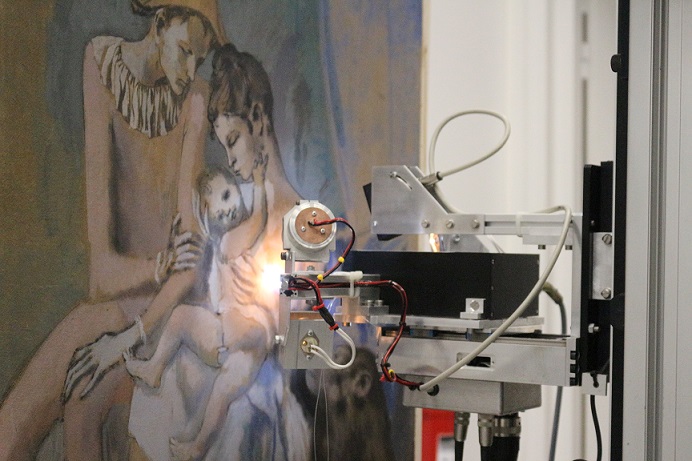User Group Leader: Mariateresa Pullano
Venue: Gothenburg Museum of Art, Sweden
The Acrobat Family is one of Pablo Picasso’s highly rated works from his Rose Period.
The painting, from 1905, was one of the first two works by Picasso,bought by Leo Steintogether with the Girl with a basket of flower.
In 1922 Gothenburg Art Museum acquired the painting and today is one of the most iconic works in its collection.
An extensive scientific investigation of the painting was carried out to unravel Picasso’s technique, materials and the object’s condition
One of the biggest concerns was that, by comparing the painting today with the museum’s archival photos and old catalogues pictures, the blue pigment in the background appeared to be severely discolored.
The work is painted with gouache on cardboard, unvarnished, with some areas of the cardboard left unpainted.
The cardboard is made of highly lignified mechanical wood pulp, with some traces of wool and cotton, as was typical of low-quality cardboard.
Preliminary technical photography (VIS, UVR, UVF, IR, IRFC and microphotography) performed by the Gothenburg University showed the relation between the degradation of the cardboard and the pigments discoloration to be plausibly related.
In 2018CATS (Centre for Art Technological Studies and Conservation) carried out XRF, FTIR and UV-vis-NIR reflectance spectroscopy, where it was achieved a better understanding of the painting technique, identifying ultramarine as the main colouring material in the blue area, and discover a hitherto preparatory drawing in the back.
After these results, there was a need to undertake further research to better understand the fading and distribution of the blue paints and, possibly, to characterize further the nature of the water and oil-based media and the relation between the pigments discoloration with the degradation process of the cardboard support.
By getting access to the MOLAB facilities from France and from two teams in Italy we have been able to carry out non-invasive analyses needed to continue this investigation, such as Raman, Macro XRF scanning, Scanning multispectral VIS-NIR reflectography, VIS hyperspectral imaging and NIR hyperspectral imaging.
The project aim has been to find a possible relationship between the degradation of the cardboard, due to its nature and composition and the fading of the pigments, especially the ultramarine.
The challenge of the project is to understand if there is an interaction between the fading process and the binding medium and/or if it’s effected by the cardboard degradation.
In addition, because the deterioration process of the ultramarine is not well understood, this study can help to find out more about the behaviour of the pigment and its fading process.

